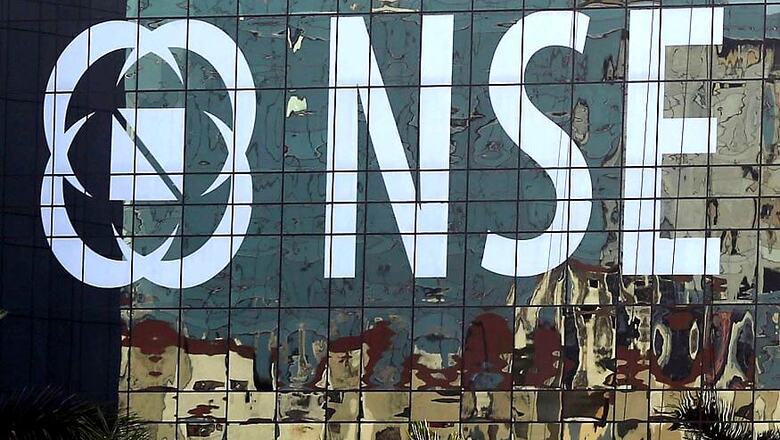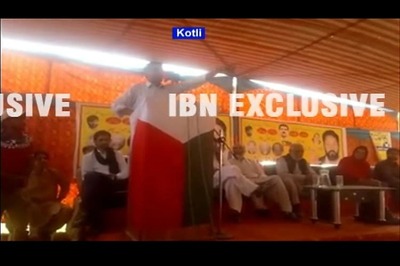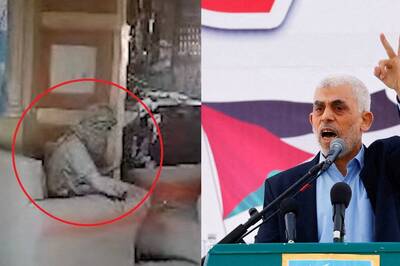
views
 Nearly 23 years since it was brought in to cut the BSE to size, the NSE finds itself accused of some of the governance issues that had caused BSE’s fall from grace.
Nearly 23 years since it was brought in to cut the BSE to size, the NSE finds itself accused of some of the governance issues that had caused BSE’s fall from grace.
There were many regional exchanges at that point, but BSE was by far the biggest and most important of them all. It had the maximum number of companies listed on it, and more trading volumes. But retail investors in far-flung towns wanting to buy or sell shares on the BSE invariably ended up getting poor prices because their orders would be routed through a chain of sub-brokers to the main broker in Mumbai.
The broker lobby was opposed to computerisation as it meant transparent prices and less room for brokers to fleece their customers. Financial institutions like UTI asked for a membership on the exchange, but were denied.
When the newly established market regulator SEBI tried to get brokers to register with it for a fee, the proposal was stoutly opposed by brokers and jobbers. They refused to carry out transactions, with the result that BSE had to be shut for a week in April 1992. A hostile crowd booed the then Finance Minister Manmohan Singh, who had come down to the BSE to meet the agitating brokers, during his visit to the city.
NSE’s arrival on the scene dramatically changed the way the stock broking business was conducted. The biggest appeal of the NSE was its electronic or screen-based trading, which meant retail investors could get to know prices in real time, and were not at the mercy of their brokers. From a broker’s perspective, it was easy to get membership on the NSE by paying a refundable deposit. In contrast, the BSE operated like a closed club with a ‘card’-based membership. The card was stiffly priced, and not easy to come by.
Another distinguishing feature was that the NSE was was run by professionals and did not have even a single broker member on its board. In comparison, the BSE’s governing board was packed with brokers, and the officials in charge of operations complained of frequent interference by influential brokers. Most importantly, the NSE’s biggest advantage over the BSE was its pan-India reach, offering services across the country. The BSE had to wait for some months before it could expand beyond Bombay. That head start made quite a difference, as the NSE had already made a mark for itself in many of the smaller towns by the time the BSE came calling.
In less than a year, the NSE had overtaken BSE in terms of daily traded turnover, stunning many veteran brokers who were till then convinced of BSE’s invincibility.
When SEBI allowed derivatives trading in equities in the early 00s, the BSE was slow to react. The trading interface was clunky and despite repeated complaints by trading members, the management did little to fix the problem. The BSE’s market share in the cash segment, or the spot market, had shrunk considerably by then. Thanks to BSE’s muddling, NSE stole a march in the equity derivatives segment as well and today enjoys a near monopoly position.
As trading volumes kept rising on the NSE, the price discovery became more efficient. It was possible for large investors to buy or sell large chunks of shares without any sharp moves in prices. This, in turn attracted more volumes, reinforcing the virtuous cycle of liquidity and higher volumes.
And while investors buying and selling shares on the NSE were happy, a section of trading members resented NSE’s growing dominance. They complained of high-handedness by the exchange whenever they tried to highlight genuine problems. Having seen the mess at BSE due to broker interference, the NSE went to the other extreme to exclude them from policy decisions. The late founder-managing director of NSE, R H Patil made no efforts to disguise his contempt for the broking community.
NSE continued to grow from strength to strength through the 00s, helped in part by the raging bull market in equities. Trading in equity derivatives took off in a big way during the bull market. But when the tide reversed in 2008, the huge build up of positions in stock futures accelerated the collapse in prices as traders sold in panic. The NSE drew flak for not putting enough checks and balances in place to prevent over trading by players without adequate resources. Still, that made no difference to NSE’s market share in both the cash and derivatives segment.
Some time in 2009, Jignesh Shah promoted-Multi Commodities Exchange announced its intent to set up a stock exchange platform as well. That had the top brass of NSE in a funk. Ironically, it was Ravi Narain, RH Patil’s deputy, who had supported Jignesh Shah when Shah was trying to get empanelled as a technology vendor to NSE in the early 00s.
NSE had reason to be worried about MCX’s impending entry into equities, given Shah’s success in making MCX the number one commodities exchange in the country.
During that period, the NSE announced some incentives for its trading members and even buried the hatchet with BSE on some long standing issues.
Hostilities with Jignesh Shah & Co came into the open in when NSE denied permission for a software developed by MCX’s parent company Financial Technologies for currency futures trading by NSE members. NSE cited security issues, but MCX claimed the rejection had to do with the fact that it (MCX) was a rival in currency futures trading. (The matter went to court and was resolved a couple of years later in 2011.)
MCX filed a complaint with the Competition Commission of India, accusing NSE of anti-competitive practices in the currency futures segment, which included not charging its members any fee. (In 2014, the CCI slapped a Rs 55.5 crore fine on NSE accusing it of predatory pricing. NSE has appealed the ruling to COMPAT)
For all the aggression--including dragging SEBI to court--Jignesh Shah & Co never turned out to be the formidable rival to the NSE that most people thought it could be. National Spot Exchange Limited (NSEL), a company promoted by Jignesh Shah’s flagship firm FTIL, got embroiled in a Rs 5600 crore scam in 2013. Shah eventually lost control of his key firms also had to suffer the ignominy of spending time behind bars.
Shah’s fall from grace left the field wide open for NSE as far as dominance in the equities segment went. The bourse’s revenues and net profits have been consistently growing all these years.
And yet, the NSE has been making the headlines for all the wrong reasons more often than not during the last 3-4 years.
In 2012, a dealer’s error led to a huge sell order being executed on the NSE. The impact of the erroneous sell order was so massive that it sent the Nifty index into a free fall trading had to be temporarily halted. Two years later, a SEBI investigation report criticised the exchange for not having robust enough technological systems to prevent the incident. Ideally, the Nifty index should not have fallen more than 10 percent at one go as the circuit breaker automatically brings trading to a halt in the event of a 10 percent fall. However, the circuit breaker on the downside got activated only after the index had fallen around 12 percent. The SEBI probe also pointed to lapses in risk management by highlighting that the trading members who had benefitted from the crash by buying at very low prices had not deposited enough margin money to be able to make such huge purchases. It also rapped NSE for commencing trading soon after without waiting for the SEBI-mandated cooling period of two hours when the index falls 10 percent in one session.
But the biggest blow to the exchange’s credibility came a few months later in 2015 when an anonymous whistleblower wrote a letter to SEBI saying that some trading members on the NSE were getting an unfair advantage by way of faster access to the price feed broadcast by the exchange. The whistleblower alleged that the trading members were able to do so by colluding with some exchange officials. The probe into the allegations is still underway. Interestingly, the whistleblower claimed that he was writing the letter out of self interest. That is because the whistleblower was an employee of one of the firms which was getting preferential access. Since quitting the firm, the whistleblower was no longer getting that advantage and so decided to expose the practice.
The details of the affair are quite interesting. The exchange allows trading members to place their servers in the same premise as the exchange’s main trading engine (server) which broadcasts the buy and sell orders placed by members across the country. The facility known as co-location or colo, is available to any member by paying a fee to the exchange. Traders availing of the colo facility will get a faster access to the price feed, helping spot opportunities ahead of non-colo members. The colo facility can be likened to premium airport parking lot, which is closer to the arrivals gate. But when too many people avail of the premium parking lot, some members will be at advantage while others will have to park farther down in the same parking lot, thus being at a slight disadvantage to the one who is parked nearest to the exit.
For a trading member, his chances of getting the best rates depending on being able to log on to the NSE’s server with the least load. The exchange rectified a loophole which initially gave an advantage to the trading member logging in the first. But the NSE had multiple servers and these would be started at different points of the day, and some smart traders were able to figure out the sequence in which they would be started everyday and would accordingly log in. The NSE then set rules on which server a trading member could log in to. But one smart trading member got around this rule too, by--according to the whistleblower--colluding with exchange employees and logging in to a server which was meant to be used only as a back up server.
This was like a car owner bribing the parking attendant to let him use an emergency entry/exit point to beat the crowd and occupy the best position in the premium parking lot.
The whistleblower’s allegations if true, are quite damaging. The letter says that a few other trading members got wind of what was happening, and when they complained to the exchange, they too were given some similar advantages.
An audit by consultancy firm Deloitte found that the NSE’s systems were prone to manipulation and abuse, but the report could not say for sure if there was collusion by the exchange officials in some members getting a faster access. SEBI has asked the the NSE to set aside the revenues from the co-location services--fees for the server as well as fees earned on the trades coming from the colo server--in an escrow account till the matter is resolved.
The NSE has mentioned these factors in its draft red herring prospectus filed with the regulator for its initial public offering. And that caused prospective investors to develop a cold feet as revenues from the colo facility account for roughly 35-40 percent of annual revenues.
Former Managing Director and CEO Chitra Ramakrishna’s abrupt exit in December 2016 was the latest in a string of bad news dogging the exchange. Ramakrishna said she had chosen to a take a break, but insiders aware of the chain of events leading to the exit do not have a charitable view. Her decision to bring in Subramanian Anand as a Chief Strategic Officer and subsequently elevate him as group Chief Operating Officer and second-in-command at a salary of Rs 4 crore plus--next to only Chitra’s--ruffled quite a few feathers within the organisation. The NSE’s audit committee too raised red flags on lack of proper processes for the appointment and NSE insiders say Anand’s high handed ways antagonised many. People close to Chitra say the old guard felt threatened at her trying to stamp her authority in the place by bringing in her key people, as their prospects of elevation would weaken. From the time NSE began operations, the top job had always gone to a person part of the founding team. It is only with the selection of Vikram Limaye as MD & CEO that the tradition has been broken.
Last year five institutional investors holding shares in NSE accused the exchange of dragging its feet on going for an initial public offering.
These investors had bought stakes in the NSE, hoping that the bourse would soon go public. Frustrated at the delay which they felt was deliberate, the investors accused the exchange of poor corporate governance, saying the management was purging their views from minutes of meetings and had zero accountability.
But as the country’s largest exchange looks to take the IPO path, the NSE finds itself hobbled by the well-aimed shafts of the whistleblower in the form of anonymous but detailed letters.
The NSE had already deposited over Rs 150 crore of its colo services earnings in the escrow account as directed by SEBI since September 2016. This has a material impact on the bourses’ earnings stream. Understandably, many investors are awaiting a final verdict on the issue, and the NSE too has decided that it will commence the roadshows for its IPO only after the issue is resolved.
Meanwhile, the whistleblower is showing no signs of letting up. In a fresh letter to SEBI, he/she has given details of how despite some change in rules, there are plenty of loopholes that can still be exploited with regards to co-location facilities.
Interestingly, the whistleblower seems to know the nuts and bolts of NSE’s trading systems so well that some are even beginning to suspect that it could even be a disenchanted employee within trying to bring about a clean.
Ironically, nearly 23 years since it was brought in to cut the BSE to size, the NSE finds itself accused of some of the governance issues that had caused BSE’s fall from grace.
Incoming MD & CEO Vikram Limaye has his task cut out.
(More Sunday Features)




















Comments
0 comment